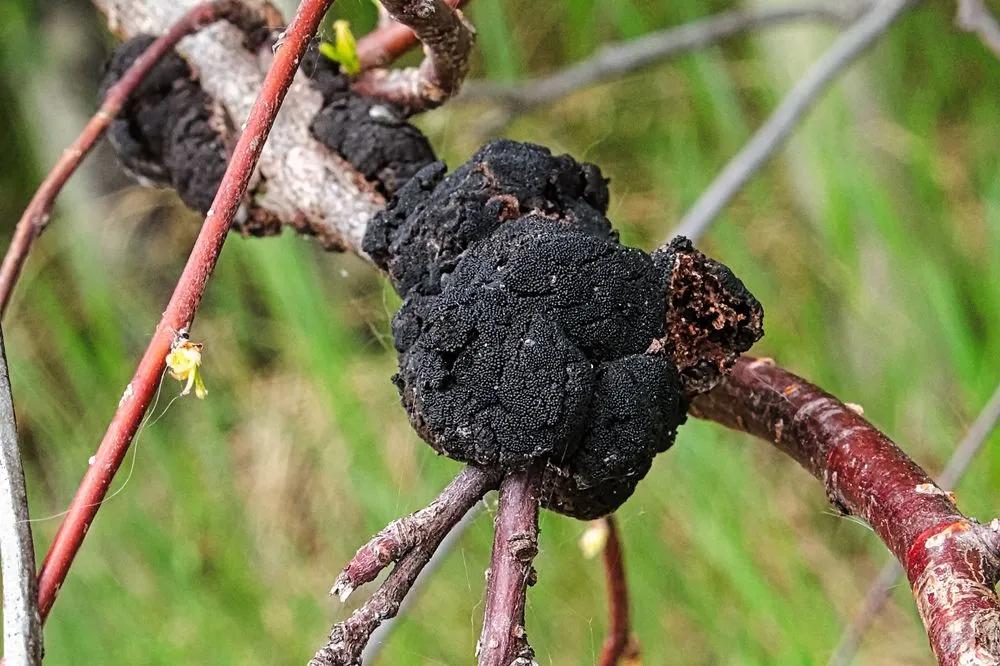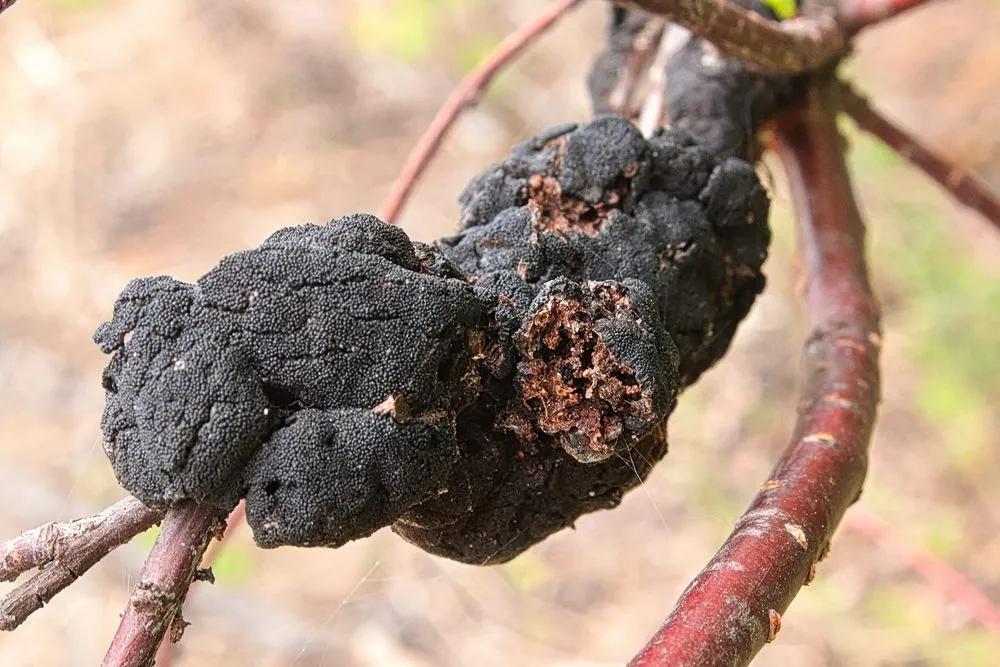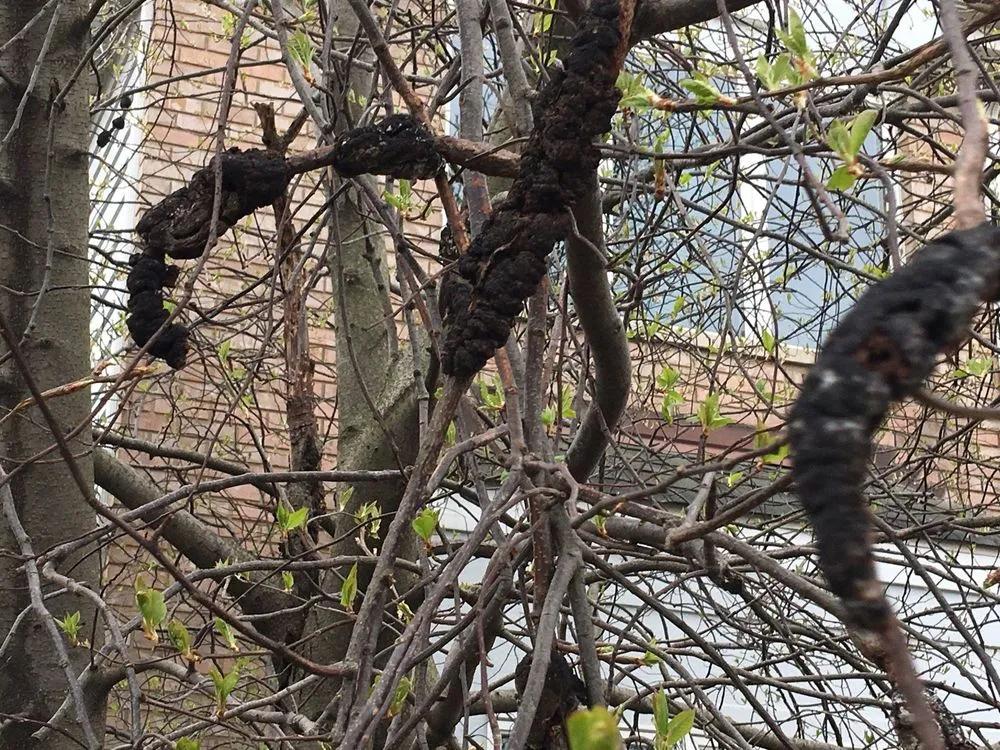Black knot is a fungal infection that affects fruit and ornamental trees. The condition is caused by the pathogen Apiosporina morbosa. It is most widespread on cherry, plum, and apricot trees. The disease usually occurs in spring, but the symptoms may not be evident until the following year.
Black Knot



Signs of damage
The stems and branches are covered with knobby, swollen black growths. These growths, commonly known as galls, emerge in early summer. Within a tree canopy, there can be anywhere from a couple of galls to hundreds of galls. By the end of summer, they turn black and develop a hard texture. The galls are most noticeable in fall and winter after the tree has shed its leaves.
How to prevent
Apply copper-based sprays during dormancy periods. This way, you will inhibit the production of the black knot spores. You can also use lime sulfur sprays during dormancy to discourage spores from germination.
We also recommend misting trees with neem oil. This essential oil is a natural fungicide that will help you control black knot along with rust, leaf spot, scab, etc.
Maintain excellent canopy ventilation by pruning the tree regularly.
Inspect your plants for the signs of black knot every other week.
Heal
If you spot black knot galls, find a pair of gardening shears or scissors and sanitize them with 70% rubbing alcohol. In such a way, you will prevent reinfection.
Using a pruning tool of your choice, remove at least 6-7 inches of the branch around the gall. If possible, trim off up to 10-12 inches. If there are numerous large knots on the stem, remove as much of the branch until there is only healthy tissue left.
Aggressive pruning out of the unhealthy segments ensures that you remove mycelium - the microscopic vegetative part of the fungus. Mycelium will continue growing if left on the plant.
If the tree is infected severely, remove it altogether.
After the black knots have been removed from the plant, they can still produce spores. Therefore, you should destroy the infected parts by throwing them in the trash, burying, or burning them.
After pruning, keep monitoring the tree in the following months and years.
Go Premium to continue reading
Also you’ll get unlimited access to disease identification and all the other beneficial features
More problems
